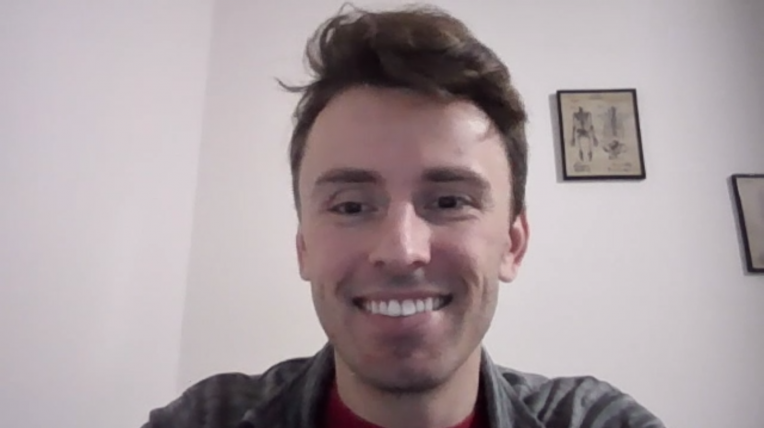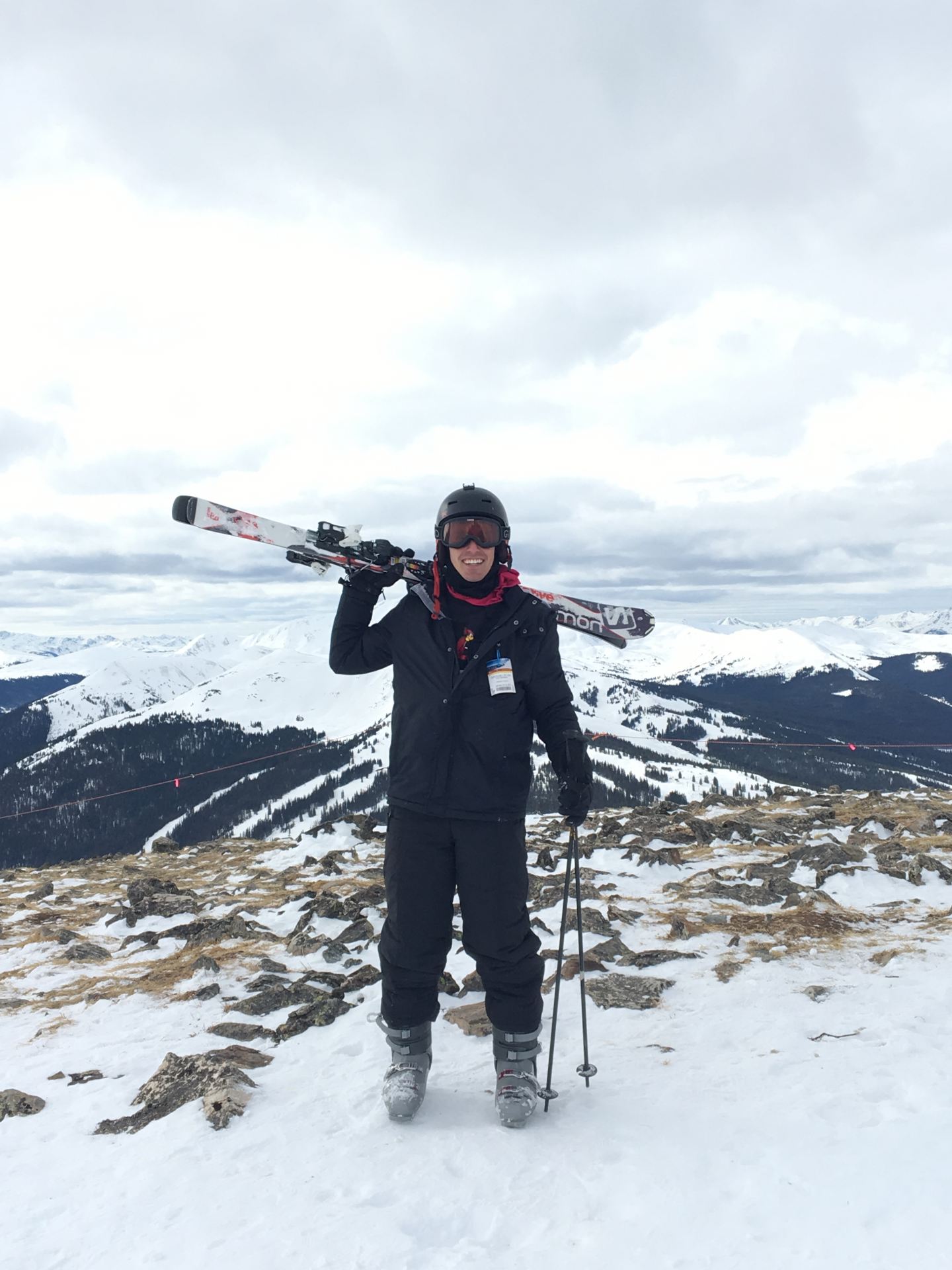Just after Winter Break begins, MCN professor and alum Harrison Krebs walked into the hospital for another night shift. On the TV, the news reports over 400,000 U.S. COVID deaths. Yet there in the ICU, it’s more than a number: it’s real patients—and the real health care workers who fight to keep them alive.

Before the COVID-19 pandemic, Krebs (BSN ’11) might have spent Winter Break visiting family members or traveling. Instead, he signed a five-week contract to work in the ICU. “Many of my friends and family are providing direct patient care. I heard their personal testaments about how challenging the pandemic has been and how ill these patients are—stories about the lack of supplies and staffing shortages,” Krebs said. “Then, I heard the numbers at local hospitals have been picking up. These hospitals have been such an excellent resource for students and for our college. I wanted to help out—to do my part when I could.”
Jumping back into the ICU, Krebs had the opportunity to work alongside former students. “I wasn’t expecting to do that!” He laughed. These students graduated in spring 2020, but there, on their own hospital floor, they were the experts. “I ended up turning to them quite a bit. The whole staff was extremely friendly, helpful, and welcoming. I’ve been an ICU nurse for quite a while, but when you’re in a different environment—not knowing where certain equipment is or how to look things up—you need to ask for help, especially during your first couple of shifts.”
The ICU shift felt familiar at first: 12+ hour night shifts that began with getting his patient assignment, checking in with the day shift for the narrative report. Krebs reviewed the patient’s story, medical history, and assessment findings. He checked what orders needed to be carried out throughout the shift, reviewed the patient’s chart, looked over lab values, double-checked medications that had been ordered and whether they needed certain tests or imaging. Other responsibilities include assessing the patients and ensuring that all of the equipment was functioning properly. “It’s constantly re-evaluating and re-prioritizing as the shift goes on.”
But COVID patients in the ICU require four times the ventilator support as any respiratory patient Krebs had seen before. “Some of these cases are just completely resistant to modern medicine,” he said. This is the new norm.
The battle for COVID patients
A patient walks into the ER, slightly short of breath but with no other apparent signs of distress. A nurse checks their oxygen saturation level. Anything below 90 percent is concerning—and the pulse-ox. reads 55 percent. To anyone else, the patient might seem fine, but the nurse knows better. They are breathing twice the usual times per minute. The hospital staff admits them, starting them off with supplemental oxygen. Eventually, they are moved to the ICU.
It’s a story hospitals are seeing all-too often. One minute, a patient is laughing with the intake nurse. Three days later, they’re on a ventilator.
Krebs spoke softly but clearly as he recalled what he sees time and time again treating COVID patients. “Once COVID patients require mechanical support to breathe, they are moved to the ICU. There are no visitors allowed, but they can Facetime with family. They are given medications to help with infections and anti-inflammatories to help with breathing. Eventually, they are intubated and hooked up to a ventilator. We do what we can to keep them comfortable despite the IV lines and tubes.”
He pauses, then continues. “Then, additional organs start to fail. Some patients require medications to help the heart pump, or dialysis to treat failing kidneys. They might need a paralytic. But the lungs continue to fail after that. Eventually, you know… we run out of options.”
Yet for Krebs, the biggest hurdle lies beyond the hospital doors. “What’s incredibly challenging is to see people who refuse to take measures to prevent this from happening. There is so much science and evidence, yet people advocate against it—over things that are a minor inconvenience.”
The emotional toll wouldn’t fully land until he headed home after his 12 or 13-hour shift.
“These people are dying with no friends/family near them,” said Krebs. “No emotional psychological support from friends or family. I get to go home, but they don’t. It’s just… incredibly sad.”
Back in the classroom
The spring semester began a few ago, bringing with it the end of Krebs’ contract. Right now, Krebs is teaching Adult III—the advanced medical surgical class—at MCN. When they get to the respiratory unit, he plans to bring in more stories about how COVID impacts the lungs. Oh, and on top of it all—he’s working on his Ph.D., too.
The classroom isn’t a hospital floor, but the work nursing educators do is crucial to preparing new nurses and staffing hospitals.
His advice to current nursing students? “The biggest thing is to listen to medical professionals and follow evidence-based practice.” Also: “Watch out for your own personal safety. Wear proper PPE, and don’t be afraid to ask for help.”
And who knows? One day, you might be giving your former instructor a tour of the hospital floor.
MCN is providing leadership in nursing. Learn more.
Our undergraduate programs
Our graduate programs



